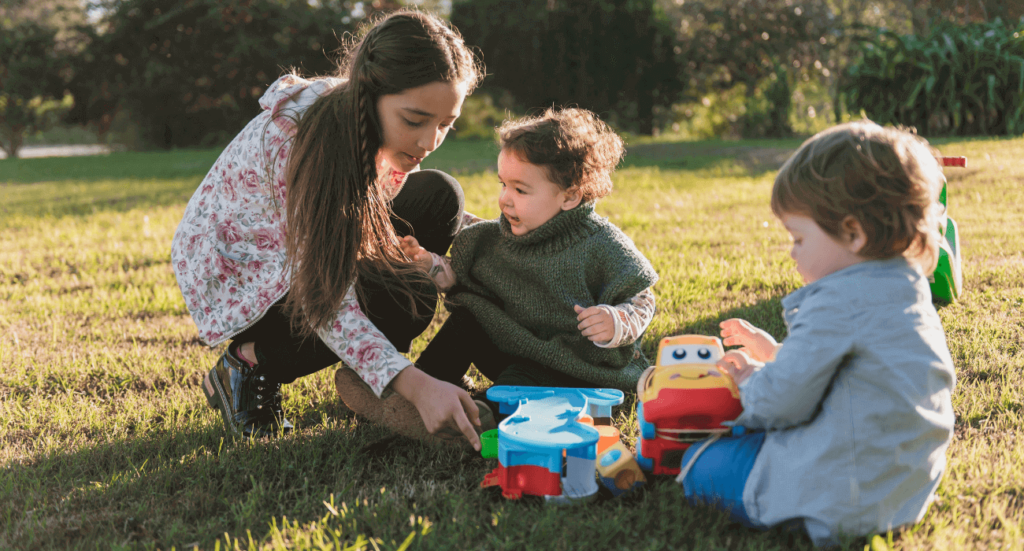Child care plays a pivotal role in shaping the future of our children. As parents and caregivers, setting great expectations can significantly influence a child’s development. This article delves into the concept of “great expectations” in child care, offering practical insights, tips, and resources for creating a nurturing and stimulating environment.
Understanding “Great Expectations” in Child Care
Definition and Importance
In the context of child care, “great expectations” refer to the high standards and aspirations we set for children’s development and behavior. These expectations are crucial as they provide children with a clear understanding of what is required of them, fostering a sense of responsibility and self-discipline. High expectations can lead to improved cognitive skills, better social interactions, and overall positive development.
Historical Perspective
Historically, child care expectations have evolved significantly. In the past, child care was often seen as merely a means of supervision. However, with advancements in child psychology and education, the focus has shifted towards nurturing a child’s potential through structured and enriching experiences. Today, child care is recognized as an essential foundation for lifelong learning and well-being.
Current Trends
Modern child care practices emphasize the importance of creating an environment that supports both academic and emotional growth. This includes implementing developmentally appropriate activities, fostering positive relationships, and maintaining open communication between caregivers and parents.
Setting Realistic and Achievable Expectations

Balancing High Expectations with Realism
While it is important to aim high, setting achievable goals is equally crucial. Unrealistic expectations can lead to frustration and disappointment for both the child and the caregiver. It’s essential to consider the child’s age, developmental stage, and individual capabilities when setting expectations. For instance, expecting a toddler to sit still for an extended period is unrealistic, whereas encouraging them to engage in short, focused activities is more achievable.
Involving Parents and Caregivers
Collaboration between parents and caregivers is key to setting and meeting expectations. Regular communication ensures that everyone is on the same page and working towards common goals. Parents can share insights about their child’s interests and strengths, while caregivers can provide feedback on the child’s progress in the child care setting.
Tools and Resources
Several tools and resources can assist in setting and tracking expectations. Developmental milestone checklists, educational apps, and parenting books are valuable resources. Additionally, professional organizations and online communities offer support and guidance for parents and caregivers.
Implementing Great Expectations in Day-to-Day Child Care
Daily Routines and Activities
Establishing consistent daily routines helps children understand what is expected of them. Structured activities such as storytime, arts and crafts, and outdoor play encourage children to develop new skills and explore their interests. Consistency in routines also provides a sense of security and stability, which is essential for young children.
Encouraging Positive Behavior
Promoting positive behavior is a cornerstone of great expectations in child care. Techniques such as positive reinforcement, clear and consistent rules, and age-appropriate consequences help children understand the connection between their actions and outcomes. For example, praising a child for sharing toys reinforces the value of cooperation and kindness.
Addressing Challenges
Challenges are inevitable, but they provide opportunities for growth. Common challenges include managing temper tantrums, addressing sibling rivalry, and dealing with separation anxiety. It’s important to approach these challenges with patience and understanding. Sharing stories or case studies of successful problem-solving can offer valuable insights and encouragement to caregivers facing similar issues.
Measuring Success and Adjusting Expectations

Monitoring Progress
Regularly tracking a child’s progress helps ensure that expectations remain relevant and achievable. Observations, developmental assessments, and feedback from parents and caregivers provide a comprehensive view of the child’s growth. This information can be used to make informed decisions about adjusting expectations and setting new goals.
Adapting to Individual Needs
Every child is unique, and it’s essential to recognize and respect their individual needs and pace of development. Personalized approaches that consider a child’s interests, strengths, and challenges can help create a more effective and supportive environment. Flexibility in expectations allows caregivers to adapt their strategies to better meet the child’s needs.
Celebrating Milestones
Acknowledging and celebrating milestones is crucial for building a child’s confidence and motivation. Whether it’s taking the first steps, learning to read, or developing social skills, celebrating these achievements reinforces the child’s sense of accomplishment and encourages them to strive for further success.
FAQ
What are “great expectations” in child care?
Great expectations” in child care refer to the high standards and goals set for children’s development and behavior. These expectations aim to encourage children to reach their full potential by providing clear guidelines and supportive environments.
How can I set realistic expectations for my child?
Setting realistic expectations involves considering your child’s age, developmental stage, and individual abilities. Collaborate with caregivers to understand what is achievable and adjust goals as your child grows and develops.
What are some effective ways to encourage positive behavior in children?
Positive reinforcement, clear and consistent rules, and age-appropriate consequences are effective ways to encourage positive behavior. Praising children for good behavior and providing constructive feedback helps them understand the value of their actions.
How can I track my child’s progress in meeting expectations?
Regular observations, developmental assessments, and feedback from caregivers and parents are essential for tracking progress. Use tools like developmental milestone checklists and educational apps to monitor and adjust expectations as needed.
Why is it important to celebrate milestones in child care?
Celebrating milestones reinforces a child’s sense of accomplishment and boosts their confidence and motivation. It acknowledges their efforts and encourages them to continue striving for success.
Conclusion
Setting great expectations in child care is a powerful tool for fostering a child’s development and preparing them for future success. By balancing high aspirations with realistic goals, involving parents and caregivers, and maintaining flexibility, we can create an environment that nurtures and supports every child’s unique potential. Remember to celebrate each milestone and continually adapt to meet the evolving needs of the child.

